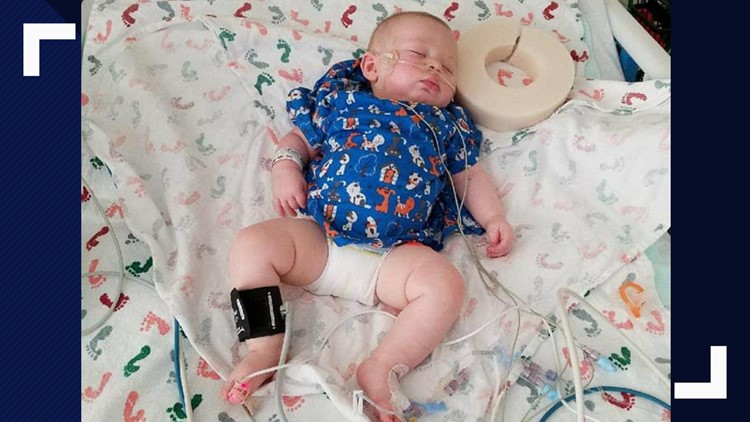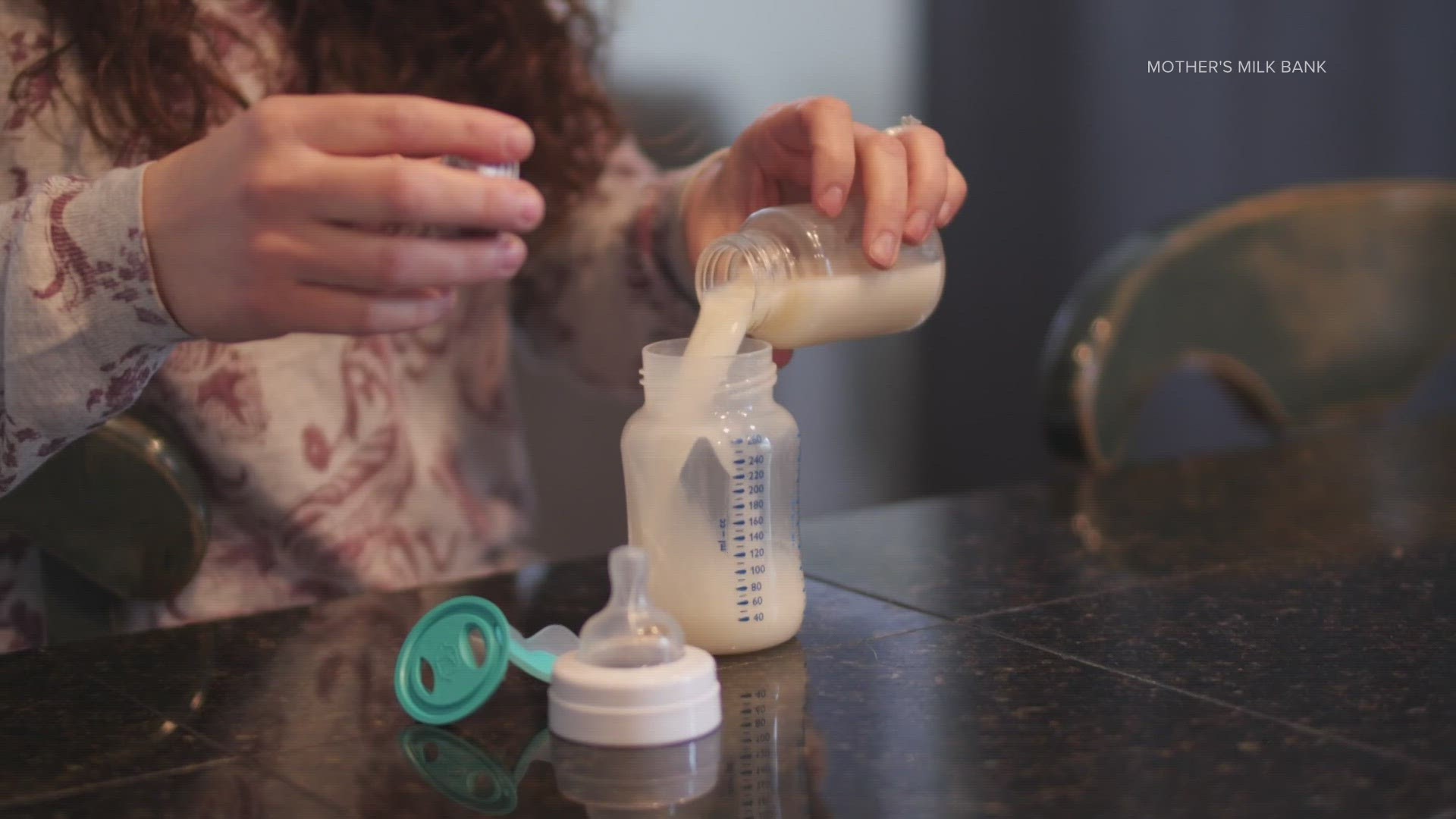A year ago this month, our four-month-old son, Reece, was admitted into the pediatric intensive care unit of Children's Hospital Colorado, with a very severe case of Croup, which is swelling of the airway caused by several common viruses.
"Kids will get a cold, runny nose, and then the virus causes swelling in the airway," said Dr. Emily DeBoer a Pulmonologist in the Multidisciplinary aerodigestive clinic at Children's Hospital Colorado. "The swelling can make it hard to breathe and give you a barky cough, or a seal-like cough."
On Saturday, December 9, 2017, I went to work as usual in the afternoon. Not long after I returned home around 11:30 p.m., my husband and I heard that unmistakable seal-like cough coming from Reece's room. We knew immediately it was Croup, but weren't overly concerned, since our oldest son Brooks had Croup the week before Reece was born. He had a few breathing treatments at the Children's Hospital Emergency Room and we went home. We imagined that as the worst case scenario this time around, but that was far from what happened.

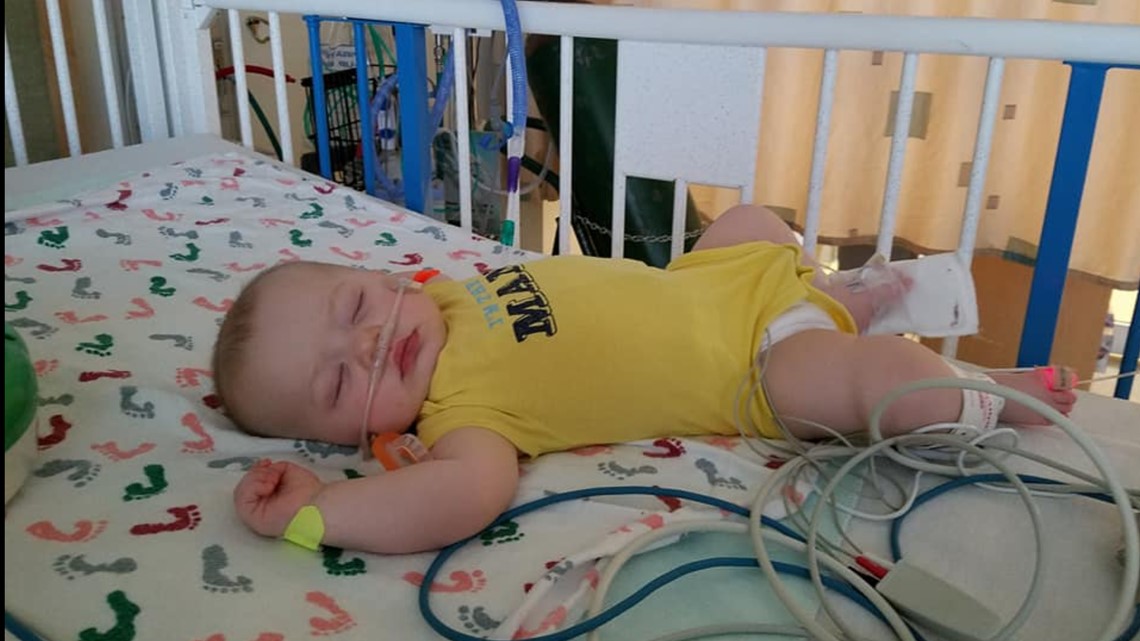
Croup tends to be worse at night, and since we still had the paperwork from Brooks' hospital visit over the summer, we began the recommended at-home care.
"We say that you can turn on the shower, turn on the hot shower and take them into the bathroom that moist air can help," said Dr. DeBoer. "There's not really medical studies that that helps, but it seems to decrease the noise in mild cases. So it can help you when you're kind of dealing with it in the middle of the night."
It seemed to help Reece, but only temporarily. After a very long night, it was clear Reece needed to be seen by a doctor because he had developed noisy breathing, which experts refer to as stridor.
"If the stridor, this high pitched noise is happening on every breath, and if you get your child calm and they’re’ still having stridor, that’s something worrisome," Dr, DeBeor. "You would want to call your pediatrician or call whoever's on call for your pediatrician if it's in the middle of the night."
On Sunday morning we called our pediatrician, who recommended we go to the Children's Hospital Emergency Room to be seen. Still not fully understanding just how sick Reece was, we got ready for the day, packed an overnight bag for our oldest son Brooks ( just in case he needed to stay the night at grandma's house) and went to the Children's hospital ER at Parker Adventist Hospital.
Minutes after getting to the exam room there, it became clear to us something more serious was wrong. I remember the respiratory therapist saying Reece's skin was "dusky". They gave him an epinephrine breathing treatment, there was no change. A second treatment, no improvement. Staff members chatted among themselves about whether to move Reece to another room. Then suddenly they were on the move with our son, as my husband and I quickly gathered our belongings and raced out the door behind them. I was still trying to fill out the hospital's paperwork.
By now we were definitely panicked. In the second room, there was chatter about a transport. I heard the doctor tell someone over the phone, a ground ambulance was fine. I was in disbelief and shock as they talked about admitting him to the hospital, which required an ambulance ride to the Children's Hospital main campus in Aurora. I remember wondering if all that was necessary and wondered how much an ambulance ride was going to cost.
It felt like a scene from Grey's Anatomy. My husband and I attempted to stay out of the way, while what seemed like dozens of staff members crowded into the room to treat our son. I don't even remember how, but somehow I ended up on the hospital bed with Reece on my lap. They poked at him at least three times before they successfully got an IV into one of his feet. They gave him a steroid shot of decadron in his leg to reduce the swelling in his throat.

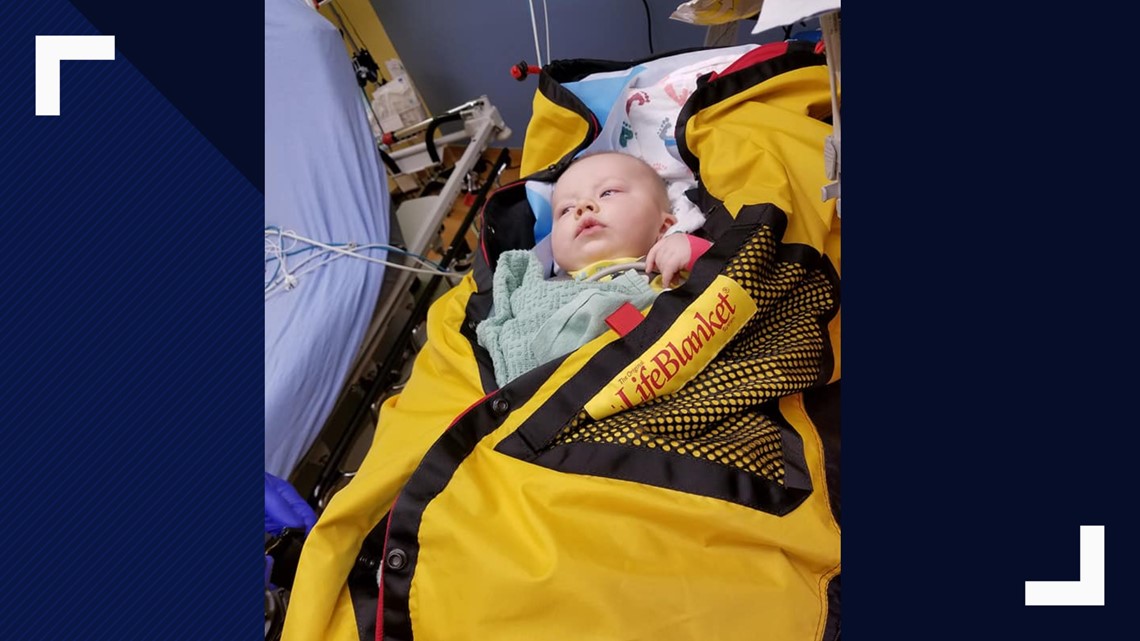
By the time a ground ambulance crew arrived to take us over to the main campus of Children's Hospital, Reece had been given a fourth epinephrine treatment. He was admitted into the PICU at the main hospital campus before we had even finished filling out the paperwork.
Once in the PICU, Reece was hooked up to what seemed like every machine imaginable. He was put on Heliox, a special blend of oxygen and helium and hooked to an IV filled with steroids to reduce the swelling in his throat. He received seven racemic epinephrine breathing treatments during the first 24 hours of treatment.

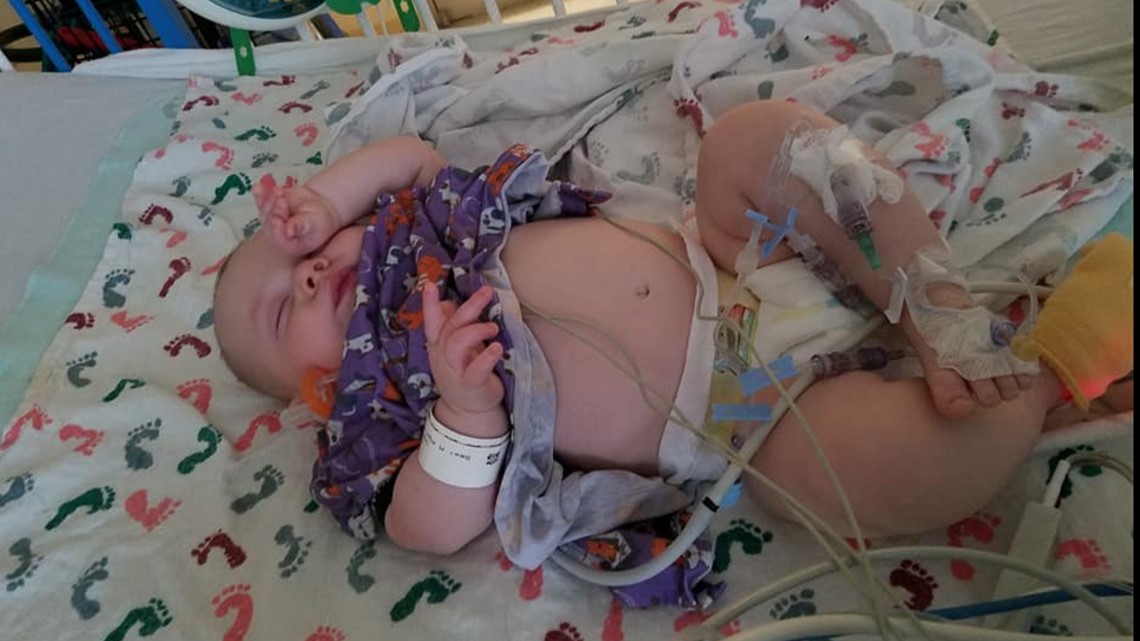
According to the Mayo Clinic, about five percent of children seen in the ER for croup require hospitalization. In 2017, Children's Hospital Colorado saw 2006 different emergency patients with Croup, 167 of those patients, including our youngest son, were admitted.
It never occurred to us that Reece would be admitted to the hospital. That night, I stayed there with him, while my husband went home to feed our animals and bring me back some essential items such as my breast pump, a toothbrush, and my contact lens case, glasses and something to sleep in.
With just a small pullout couch in the room, we decided I would spend the night and my husband would go home and come back first thing in the morning.
Nurses came in and out of the room throughout the night like clockwork to check Reece's vital signs. In the PICU, the rooms have glass doors so anyone walking by can see inside. There's at least one nurse stationed outside the room 24 hours a day with a constant view of the room through a window. I was woken up in the middle of the night because we had to move rooms to accommodate a patient being flown in from South Dakota.
In the morning, doctors told us the steroids and heliox hadn't helped as much as much as they had expected. We needed to sign paperwork allowing doctors to put Reece under anesthesia for an endoscopy, where doctors put a camera down his throat to make sure there were no underlying medical issues that could be causing his distress.
He was wheeled downstairs and into the operating room. We went to the waiting area on the second floor, where we were given a card with a number on it that was unique to Reece. We could check that number on a computer screen to track Reece's progress during the procedure. ( whether he was being prepped, in surgery, or in recovery)
The waiting was terrible, but it was a relatively quick procedure. To our relief, aside, from a large amount of swelling, everything appeared normal. Swabs taken from his throat showed Reece had both the Coronavirus and Rhino/enterovirus.

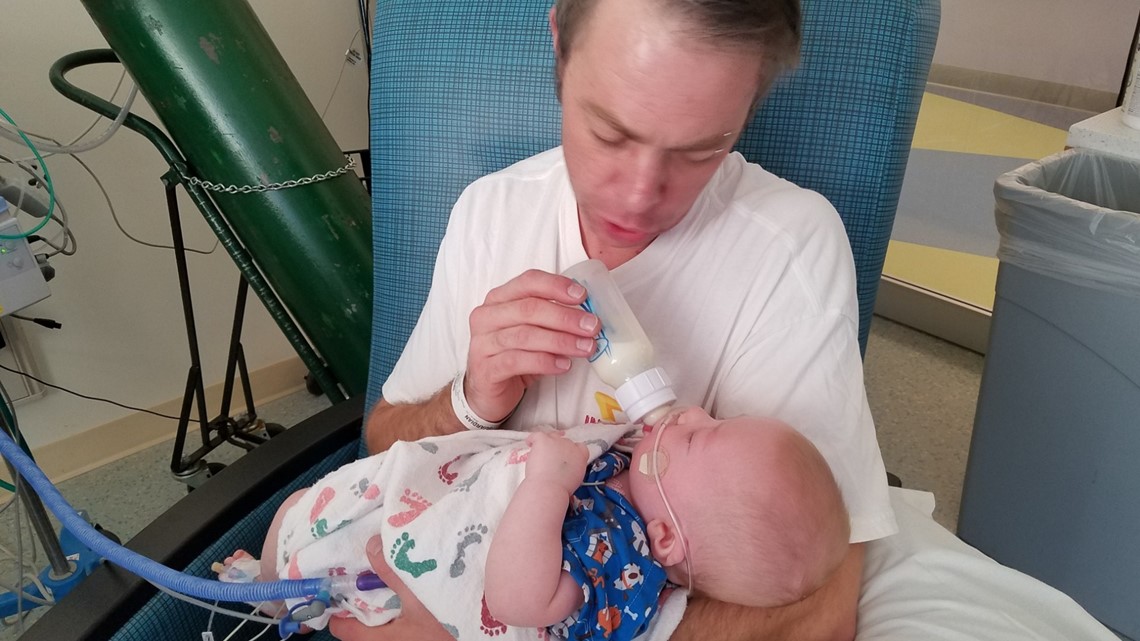
Tuesday night, my husband's mother came to the hospital to stay with Reece so that we could leave for a little bit. We went home, where I ate non-hospital food and showered for the first time since Sunday, We packed a bag, visited with our older son and headed back the hospital.
Croup is most common in children between 6 months old and 5-years-old, according to Children's Hospital Colorado, but can happen outside that age range. The smaller the child, the bigger an impact croup can have, which is likely what landed Reece in the PICU.
"If you think about how small a 4-month old is, versus when your older son (Brooks was 2.5 at the time) got it, his airway tripled in size between a baby and a child," said Dr. DeBoer. "If our airway swells with the same virus, we have a lot more reserves so it’s a lot easier for us to breathe."
In Reece's case, doctors told us his throat was so swollen, it was like he was attempting to breathe through something the size of a toothpick.
Inside the walls of the hospital, it seemed like time stood still, while the rest of the world moved on outside without us. Finally, on Wednesday, Reece had improved enough to be removed from the heliox and IV drip of steroids. We moved from the PICU to an inpatient room on the 8th floor.

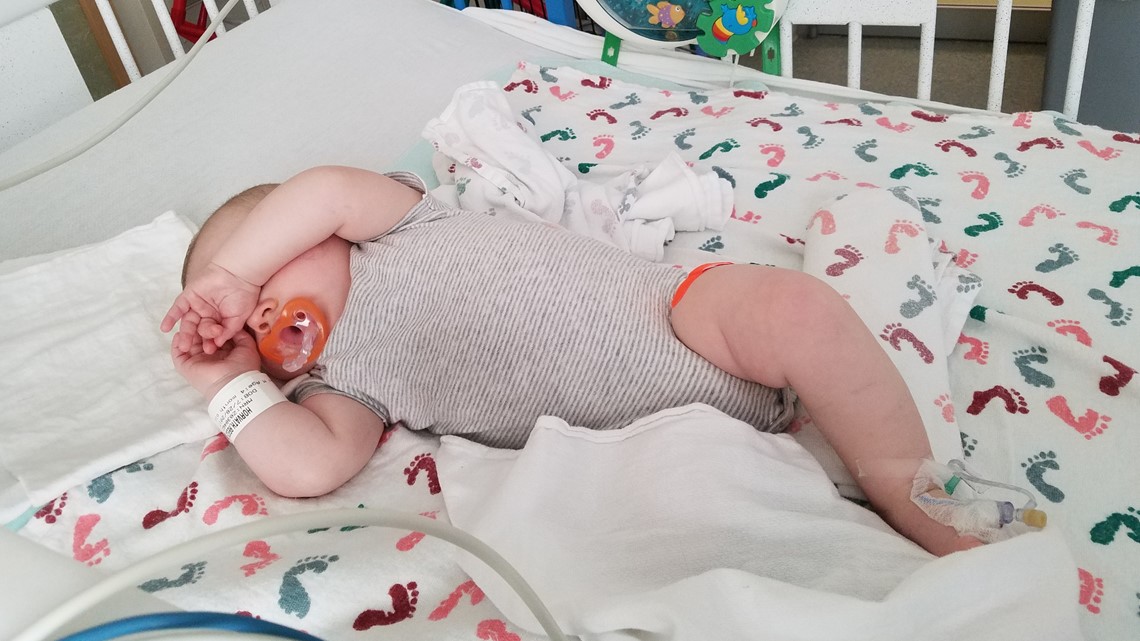
The rooms were more private and had their own bathrooms and showers. Instead of a nurse being right outside 24 hours a day, we used a call button to call for help if needed. With Reece's condition slowly improving, my husband returned to work and I stayed at the hospital with Reece. The days were long because Reece was quarantined to the room, which meant I was too.
With Christmas coming up, the annual Long Blue Line event took place in the lobby during our stay at the hospital More than 250 cops delivered toys and hosted a party in the atrium. While we could not go, a toy was delivered to our room by a nurse. The small gesture was a special bright spot during our stay.

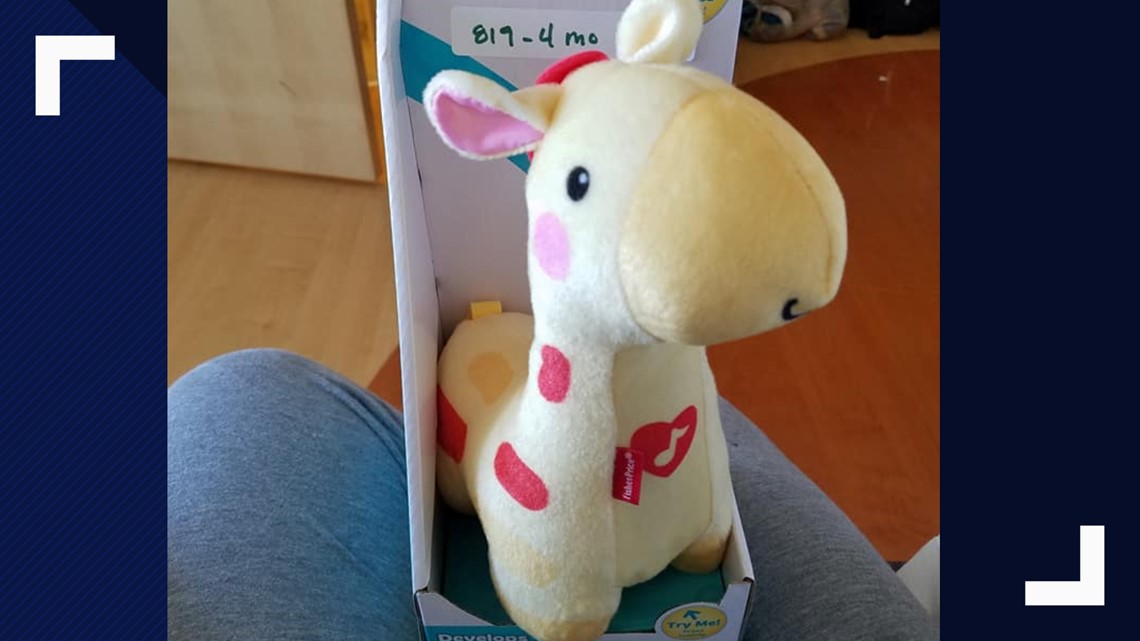
Finally, on Friday, December 16, we were able to go home. We were so thankful that our son was healthy again and had no long-term effects from his illness, especially with Christmas just over a week away. We knew we were lucky to have such a wonderful hospital so close to us. We knew a lot of the patients in that hospital wouldn't be going home for the holidays.

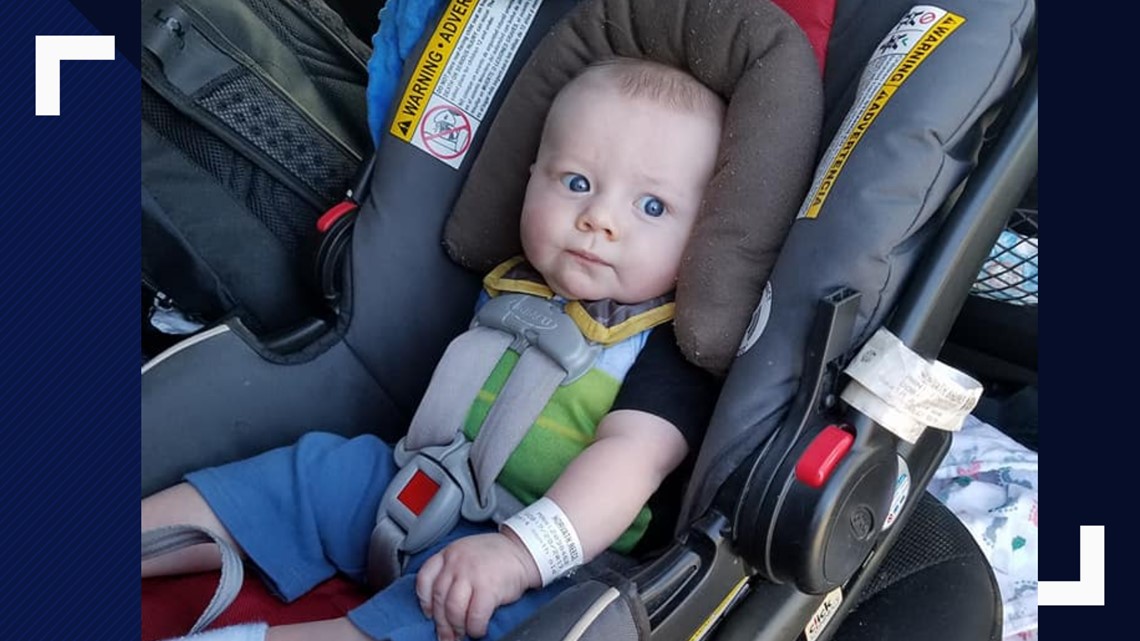
Do you have a story idea or comment, email me janet.oravetz@9news.com
According to Children's Hospital Colorado, If you notice any of the following symptoms during your child's illness you should immediately call your doctor and get medical attention.
- Difficulty breathing, including rapid or labored breathing
- Retractions (when the skin between the ribs pulls in with each breath)
- Stridor (high-pitched or squeaking noise when inhaling)
- A pale or bluish color around the mouth
- Drooling or difficulty swallowing
- A fatigued appearance
- Signs of dehydration (including a dry or sticky mouth, few or no tears, sunken eyes, thirst, no urine or only a little dark yellow urine for 8-12 hours and extreme tiredness)
- A very sick appearance
SUGGESTED VIDEOS | Feature stories from 9NEWS


